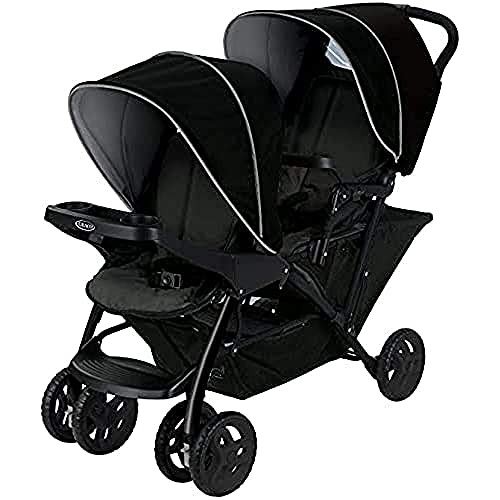7 Useful Tips For Making The Most Of Your Pram Vs Pushchair
Pram vs. Pushchair: Understanding the Key Differences
When it comes to transporting babies and young kids, moms and dads often find themselves overwhelmed by the different choices readily available. Amongst Push Pram , prams and pushchairs are two of the most typical kinds of baby transport. While the terms are frequently utilized interchangeably, each has distinct functions and advantages that cater to diverse parenting requirements. In this article, we will check out the fundamental differences between prams and pushchairs, assisting parents make informed decisions about which is best fit for their household.
What is a Pram?
A pram, or perambulator, is a kind of baby carriage created mostly for newborns and infants. Prams generally feature a completely flat lying position, which is essential for newborns who require to lie flat for spinal advancement. Many prams come geared up with a deep, enclosed body that provides a comfortable and protected environment for the baby, often with extra functions such as hoods or covers to shield them from the aspects.
Secret Characteristics of Prams:
- Flat Lying Position: Supports healthy spinal advancement in newborns.
- Confined Design: Protects the baby from wind and sunlight.
- Standard Aesthetic: Often made from products like wicker or fabric, giving a timeless appearance.
- Weight and Bulkiness: Generally heavier and bulkier than pushchairs.
What is a Pushchair?
A pushchair, likewise referred to as a stroller or buggy, is developed for older babies and toddlers who can sit up unassisted. Pushchairs enable multiple seating positions, including reclining options for naptime. They are typically lighter and more agile than prams, permitting parents to navigate hectic locations with ease. Lots of pushchairs feature adjustable deals with, storage compartments, and can often be folded for convenient transport.
Secret Characteristics of Pushchairs:
- Seating Position: Designed for kids who can sit up, with various reclining positions.
- Light-weight and Compact: Easier to maneuver and transport.
- Adaptability: Many models are convertibles or can accommodate automobile seats.
- Storage Features: Often consist of baskets for carrying diaper bags, toys, and so on.
Key Differences Between Prams and Pushchairs
Below is a relative table highlighting the vital distinctions between prams and pushchairs.
Feature
Pram
Pushchair
Target Age
Newborns to 6 months (flat position needed)
6 months to toddler age (sitting unassisted)
Design
Confined, standard design
Open, modern design
Weight
Much heavier, bulkier
Lighter, more compact
Seating Options
Flat just
Multiple positions including reclining
Manoeuvrability
Less maneuverable due to weight
Highly maneuverable
Storage Space
Limited
Generous underneath baskets
Choosing Between a Pram and a Pushchair
Factor to consider Factors:
- Age of the Child: Choose a pram for newborns and a pushchair for older babies and toddlers.
- Planned Use: If you plan to do a lot of walking or browsing city streets, think about a design that fits your lifestyle.
- Area: Assess the offered storage in your home or car and how compactly a design can fold.
- Budget: Consider the rate variety, as prams and pushchairs can differ widely in cost.
- Features: Look for additional features that might be useful for your day-to-day life, such as cup holders, canopies, or easy folding mechanisms.
Advantages and Disadvantages
Advantages of Prams
- Perfect for Newborns: Encourages healthy spinal column advancement.
- Comfy Space: Provides a comfortable environment for infants.
Disadvantages of Prams
- Weight: Heavier and bulkier, making them less useful for everyday usage.
- Limited Use Time: Generally helpful just for the first 6 months.
Benefits of Pushchairs
- Flexibility: Suitable for longer periods as the child grows.
- Light-weight Design: Easier to bring and maneuver.
Drawbacks of Pushchairs
- Not Suitable for Newborns: Requires the kid to be able to stay up unassisted.
- Less Protective: Generally more exposed than a pram.
Regularly Asked Questions (FAQs)
1. Can I utilize a pushchair for a newborn?
Most pushchairs are not developed for newborns; however, numerous designs feature infant automobile seat adapters. Some pushchairs offer a fully reclining seat option that might appropriate for babies, however guarantee the manufacturer validates it's safe.
2. Which is better for travel?
Pushchairs are typically chosen for travel due to their lightweight and compact nature. They can frequently be folded quickly for transportation on public transport and fit more readily in vehicle trunks.
3. The length of time can I utilize a pram?
Prams are typically appropriate for babies up until they reach around 6 months of age or when they can support themselves in a seated position.
4. Exist hybrid models offered?
Yes, lots of manufacturers produce hybrid designs that can be transformed from a pram to a pushchair depending upon the kid's development stage.
5. What should I search for when purchasing a pram or pushchair?
When buying, consider safety functions, ease of usage, durability, weight, and storage. It's also advisable to evaluate various models for convenience before making a choice.
Picking in between a pram and a pushchair eventually depends on the age of your kid and your lifestyle choices. Understanding their distinctions helps moms and dads make informed options that deal with their household's needs. Parents can take pleasure in the journey of being a parent by making sure that their child's convenience and safety are constantly prioritized, while likewise considering their own benefit and style.
